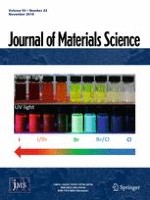24-07-2018 | Polymers
A triphenylamine-functionalized fluorescent organic polymer as a turn-on fluorescent sensor for Fe3+ ion with high sensitivity and selectivity
Published in: Journal of Materials Science | Issue 22/2018
Log inActivate our intelligent search to find suitable subject content or patents.
Select sections of text to find matching patents with Artificial Intelligence. powered by
Select sections of text to find additional relevant content using AI-assisted search. powered by
